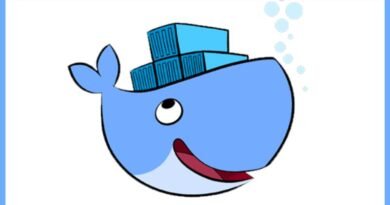Docker: An Introduction to Containerization
In today’s world, applications are becoming more complex, and developers are facing difficulties deploying, scaling, and managing them. Docker is a powerful tool that allows developers to solve these problems by providing a platform for containerization, a way to package and deploy applications. In this article, learners will explore what Docker is, how it works, and how it can benefit developers and businesses.

What is Docker?
Docker is an open-source platform for developing, shipping, and running applications in containers. Containers are lightweight and portable environments that can run an application and all its dependencies in isolation. Docker provides a standard way to package and distribute applications, making it easier for developers to create and deploy applications on different environments, including local machines, cloud servers, and data centers.
Learn Docker on Skillshare – View the Classes (Free Trial)
How does Docker work?
Docker works by creating containers that package an application and all its dependencies, including libraries, frameworks, and runtime environments, into a single image. The image can then be distributed and run on any system that supports Docker. Docker uses a layered file system and shared resources to reduce the size of images and improve performance.
When a container is started, Docker creates a separate namespace and cgroup for the container, which isolates it from the host system and other containers. The container has its own file system, network stack, and process space, making it lightweight and portable. Docker also provides a networking system that allows containers to communicate with each other and the host system.
What are the Benefits of Docker
Docker provides several benefits to developers and businesses, including:
1. Consistency
Docker ensures that applications run the same way across different environments, including development, testing, and production. This reduces the risk of errors and inconsistencies that can occur when applications are deployed on different systems.
2. Portability
Docker containers can run on any system that supports Docker, making it easy to deploy applications on different environments, including local machines, cloud servers, and data centers.
3. Scalability
Docker makes it easy to scale applications by allowing developers to create and run multiple instances of a container, either on the same system or across different systems.
4. Efficiency
Docker containers are lightweight and portable, making them faster to deploy and start than traditional virtual machines. Docker also uses shared resources and a layered file system to reduce the size of images and improve performance.
Getting started with Docker
To get started with Docker, you need to install Docker on your system and create a Dockerfile, a text file that contains instructions for building a Docker image. The Dockerfile specifies the base image, the application code, and any dependencies required to run the application.
Once you have created a Dockerfile, you can build the Docker image using the docker build command. The command creates a Docker image from the instructions in the Dockerfile.
You can then run the Docker image using the docker run command, which creates a container from the Docker image and runs the application inside the container.
Conclusion
Docker is a powerful tool that provides a platform for containerization, a way to package and deploy applications. Docker provides several benefits to developers and businesses, including consistency, portability, scalability, and efficiency. By using Docker, developers can create and deploy applications more easily, and businesses can reduce the costs and risks associated with application deployment.
FAQs:
A Docker container is a lightweight and portable environment that packages an application and all its dependencies, including libraries, frameworks, and runtime environments, into a single image. The image can then be distributed and run on any system that supports Docker.
Docker containers are more lightweight and portable than virtual machines. Virtual machines require a complete operating system to run, while Docker containers only require the necessary dependencies to run the application. This makes Docker containers faster to deploy and start than traditional virtual machines.
Yes, Docker can be used for large-scale applications. Docker allows developers to create and run multiple instances of a container, either on the same system or across different systems, making it easy to scale applications.
No, Docker can be used by anyone who needs to package and deploy applications. Docker provides benefits to developers, operations teams, and businesses by improving the consistency, portability, scalability, and efficiency of application deployment.
Docker has a learning curve, but it is not difficult to learn. Docker provides documentation, tutorials, and a supportive community to help users get started and solve problems. With practice and experience, users can become proficient in using Docker for application deployment. This Guided Project is a great resource from beginners
Note: We may get compensated if you buy something following the links on this website

